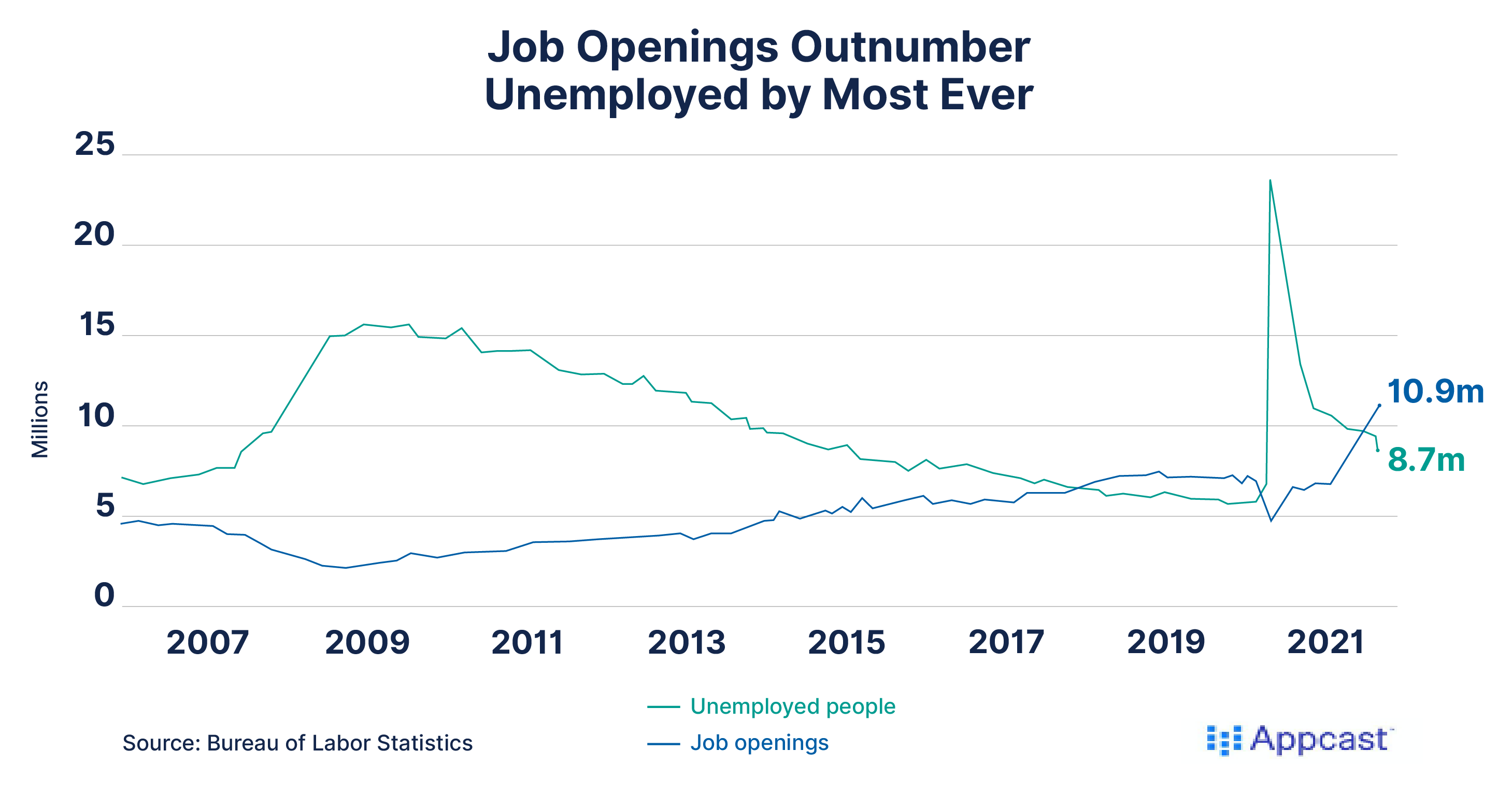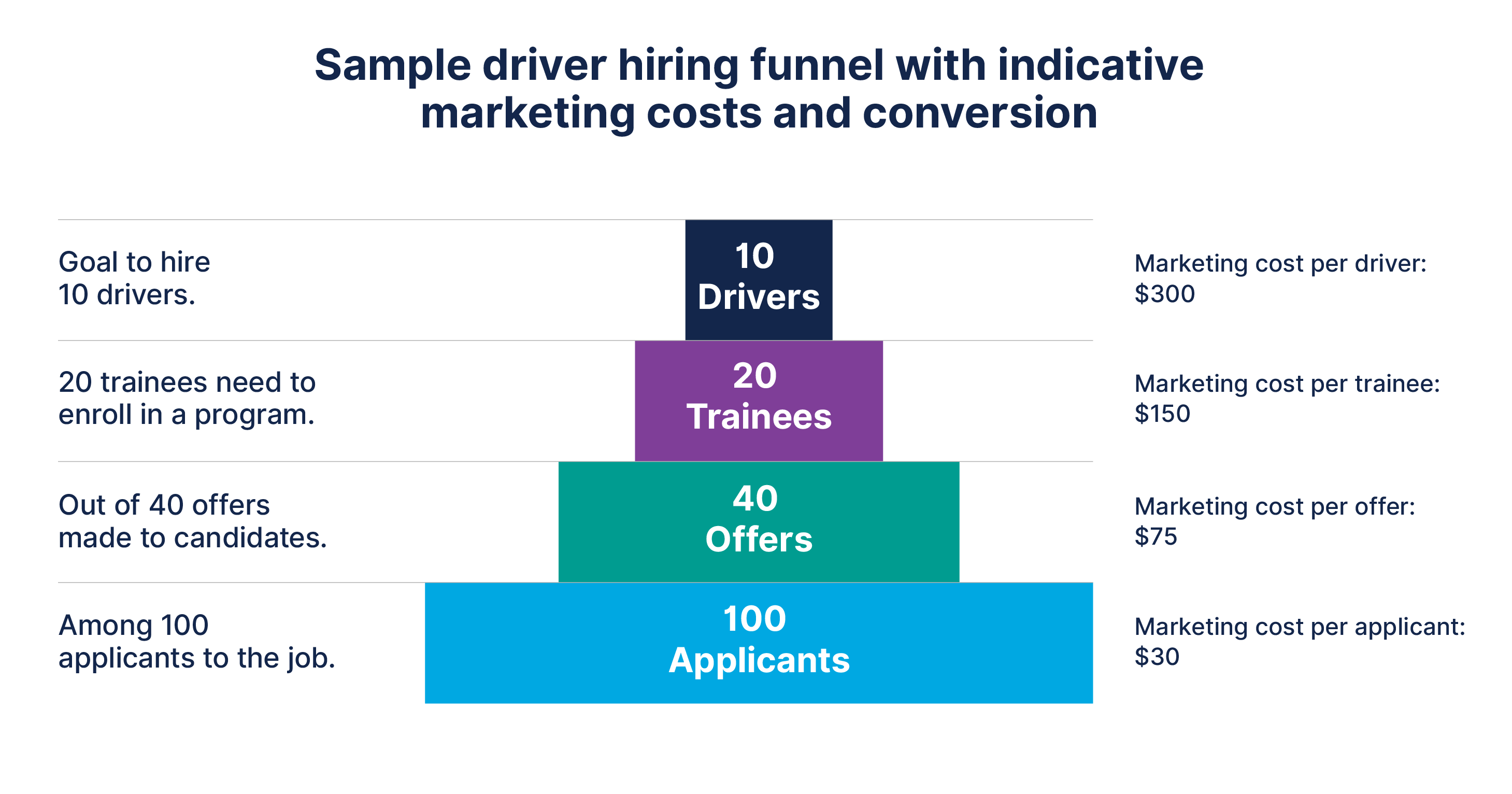The pandemic has wreaked havoc on the labor market: first, with large-scale unemployment, and more recently with what’s been termed ‘The Great Resignation.’ This refers to the startling fact that the number of job openings in the United States now outpaces the number of unemployed workers by more than two million. According to the Bureau of Labor Statistics, the national unemployment rate was 4% in January 2022 — a massive drop from the 14.7% rate in April 2020.
In the transit industry specifically, thousands of commercially licensed bus drivers who were furloughed in 2020 have now either retired or decided not to return. But it’s not just fear of infection and stress of a pandemic that are pushing transit drivers away from their old jobs. E-commerce as a proportion of total retail sales, adjusted for seasonal variation, increased from around 11% at the end of 2019 to nearly 14% at the end of 2020, leading to a higher demand for drivers in logistics and trucking. And with school back in session and many districts enforcing lower occupancy limits per school bus, CDL drivers are not short on opportunities.  This confluence of supply and demand factors and the resulting driver shortage have led to increased cost for transportation providers, with wages, hazard pay, and bonuses on the rise and tight competition requiring increased spend on recruitment efforts. It’s also led many agencies and school districts to rethink requirements for drivers while competing for the few CDL drivers searching for work. Many school bus and transit riders have faced lower service quality as routes are cut and headways lengthen.
This confluence of supply and demand factors and the resulting driver shortage have led to increased cost for transportation providers, with wages, hazard pay, and bonuses on the rise and tight competition requiring increased spend on recruitment efforts. It’s also led many agencies and school districts to rethink requirements for drivers while competing for the few CDL drivers searching for work. Many school bus and transit riders have faced lower service quality as routes are cut and headways lengthen.
Some agencies have responded creatively, introducing more flexible, on-demand services that can better match supply to demand and maximize the impact of a smaller driver pool. But no matter the service design, agencies will need to prioritize hiring to keep up as transit continues to rebound in 2022.
At Via, we have experience recruiting, hiring, training, and retaining tens of thousands of drivers across hundreds of microtransit, paratransit, and fixed line services — both prior to and during the pandemic — and we regularly help introduce our software partners to industry best practices. Here’s what’s working.
Planning
The first step to building and maintaining a robust pipeline of qualified drivers is setting realistic goals. Aligning with your team on how many drivers are needed and when they are needed is critical in order to construct a model of your hiring funnel. Not everybody who applies will be qualified and not everybody you extend an offer to will accept. We recommend building your pipeline model based on historical benchmarks for how many applicants you tend to offer positions to, how many of those offered are usually accepted, and how many of those who accept complete training and actually start driving. With the driver recruiting market becoming more competitive, we would recommend updating these benchmarks accordingly and assuming a lower conversion rate from applicants to drivers.
 This is also the time when your team should finalize your budget, which means determining how much will be spent on various aspects of marketing (out-of-home, digital, print), bonuses and incentives, drug testing, training, and so on. We’ve seen cost per application (or, the total amount spent by an agency on the digital marketing required to receive a single applicant) in the transportation industry rise from $19.23 in December of 2019 to $30.72 in the fall of 2021, so understanding where candidates ‘drop off’ from your pipeline and at what scale will help your team ensure this significant spend sees returns ( Appcast Research , October 2021). For example, if you invest $3,000 in marketing to receive 100 applications, you’re effectively spending $30 per application and, depending on drop-off rates, you could see marketing costs per driver reach as high as $300. Given the additional investments in drug testing and training that occur in this latter part of the hiring funnel, your total cost per driver would be much higher. Reviewing historical data and planning with these considerations in mind can help you scale back spend and reduce the guessing usually involved at this stage.
This is also the time when your team should finalize your budget, which means determining how much will be spent on various aspects of marketing (out-of-home, digital, print), bonuses and incentives, drug testing, training, and so on. We’ve seen cost per application (or, the total amount spent by an agency on the digital marketing required to receive a single applicant) in the transportation industry rise from $19.23 in December of 2019 to $30.72 in the fall of 2021, so understanding where candidates ‘drop off’ from your pipeline and at what scale will help your team ensure this significant spend sees returns ( Appcast Research , October 2021). For example, if you invest $3,000 in marketing to receive 100 applications, you’re effectively spending $30 per application and, depending on drop-off rates, you could see marketing costs per driver reach as high as $300. Given the additional investments in drug testing and training that occur in this latter part of the hiring funnel, your total cost per driver would be much higher. Reviewing historical data and planning with these considerations in mind can help you scale back spend and reduce the guessing usually involved at this stage.
Marketing
Crafting a compelling offering is a fundamental part of marketing your job postings. Simply searching on Google for ‘driver jobs’ or ‘driver wanted’ can show you what agencies, school districts, logistics firms, and private companies around you are paying for advertising and clicking around can reveal the details of their hiring packages. This is one of the easiest ways to gauge local competition in your market, before setting your own plan for driver earnings and incentives. Put yourself in your potential applicant’s shoes: what would you search for when looking for a new role? Be sure to mention all components of pay in your advertised rates (overtime, annual increases, hazard pay, vacation days, retirement contributions, perks) to attract the best talent — not only will this increase your driver pool, but it can also reduce dropoff and increase the number of conversions from applicant to working driver.
Organic / SEO
Of course, what you include in your job listing doesn’t matter much if nobody sees it. On the organic side, you can increase your click rates with punchy, descriptive titles — it’s best to stick to one to three words, which perform better from both a click rate and apply rate perspective. Put yourself in your potential applicant’s shoes: what would you search for when looking for a new role? In terms of distribution channels, large job boards like Indeed, LinkedIn, and ZipRecruiter, will always be a safe bet but don’t rule out Google and Facebook — though they can be costly, they also have the distinct advantage of targeting both active and passive job seekers.
Paid Marketing
On the paid side, it’s important to develop a comprehensive digital marketing strategy to stand out, especially in this competitive market. Work with your agency’s marketing, communications, and / or public relations departments to draft copy and design visuals for social media posts, social media ads, search ads, classifieds, and even physical flyers posted at your local transit hubs. What can be tracked can be improved, so we recommend investing more heavily in digital advertising efforts and continuing to A / B test copy variations, budget allocation, and location throughout the process.
Conversion and tracking
Now you’re ready to convert qualified leads into drivers. The first step is to initiate email and SMS campaigns for easy communication between your agency and applicants. You can also conduct higher-touch outreach by phone and in person. Our partners have found success with a hybrid approach: offering candidates the option to either complete their application and interviews virtually, or in person with appropriate safety precautions.
Through A/B testing, we’ve found that in-person onboarding makes for a faster process, better conversion, and lower cost per hire — even during the pandemic. In-person interviews can also serve as a more inclusive option for candidates who may be uncomfortable with technology. You can consider offering defined sign-up slots to maintain safe capacity levels at your office or other place of meeting. And always be sure to follow local public health guidance.
Finally, tracking results and experimenting with all of your hiring practices will consistently lead to improved outcomes. Create reports to track your progress against your targets: if you expect to receive 100 applications and only receive 40, you have a great opportunity to test different marketing strategies, driver offerings, and email / SMS copy. Meet regularly with all of your stakeholders to monitor progress and get recommendations as well.
Looking ahead
While hiring qualified CDL drivers is particularly difficult right now, the truth is that these strategies shouldn’t just be reserved for challenging times. Reviewing historical data prior to setting goals, understanding the competition, using creative copy in job listings, and continuously experimenting are all necessary steps to maintain a healthy driver pipeline regardless of the state of the industry. The methods we’ve outlined here can help you get the best drivers even when conditions improve and can set your team up for success throughout 2022 and long into the future. If you would like to learn more about how Via can help you build a better transportation service for riders, drivers, and operators, reach out to us at partnerships@ridewithvia.com.




